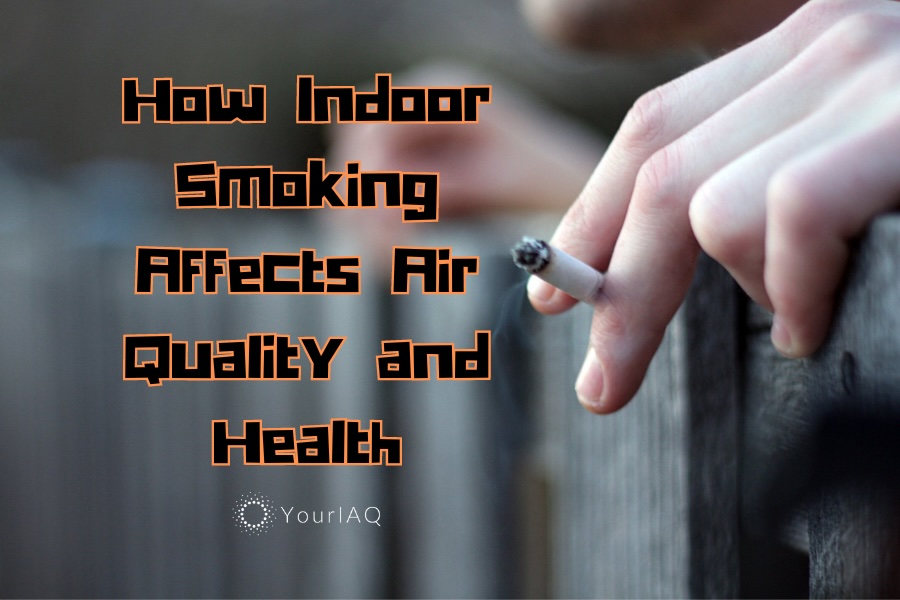
At YourIAQ, we’re your go-to resource for all things related to indoor air quality. In this beginner’s guide, we delve into a critical aspect that affects the air we breathe daily: indoor smoking. We’ll explore the various dimensions of how smoking affects indoor air quality and the implications for your health.
Health Impacts of Secondhand Smoke
Indoor smoking doesn’t just affect the person holding the cigarette; it profoundly impacts those sharing the space. Secondhand smoke contains a complex mix of chemicals, and exposure has been linked to respiratory infections, asthma exacerbations, and cardiovascular diseases. For an in-depth understanding of these health risks, consult the sections dedicated to smoking and tobacco from the Centers for Disease Control and Prevention (CDC) or the World Health Organization (WHO).
Effects on Home Surfaces and Furnishings
Beyond the immediate health concerns, indoor smoking leaves a lasting mark on any living environment. Smoke particles settle on surfaces and furnishings, creating a lingering odor and potentially staining walls. This residue isn’t just unsightly; it can contribute to indoor air pollution. Lingering particulate matter from smoking can emit more than 7,000 potentially harmful chemicals into your indoor air, according to the EPA.
Children and Passive Smoking
Children, with their developing respiratory systems, are particularly vulnerable to the harmful effects of secondhand smoke. Passive smoking has been associated with increased rates of respiratory infections, ear infections, and the development of asthma in young people. Parents and caregivers can find valuable information on protecting their children from secondhand smoke on reputable sites like the American Academy of Pediatrics.
See also:
Creating a Safe Haven: Practical Strategies for Clean Air for Seniors, Asthmatics, and Infants
Comparative Analysis: Indoor vs. Outdoor Smoking Impact
Is smoking indoors any different from smoking outdoors? The answer might surprise you. While outdoor smoking disperses pollutants more effectively, indoor smoking can lead to higher concentrations of harmful substances.
Creating a Smoke-Free Environment
Creating a smoke-free environment is not only beneficial for your health but also for the indoor air quality of your living space. Explore practical tips on making your home smoke-free on Smokefree.gov, a resource provided by the National Cancer Institute.
Supporting Smokers in Quitting
Quitting smoking is one of the most effective ways to improve indoor air quality and overall health. If you or someone you know is considering quitting, numerous resources are available. Reach out to the American Lung Association or call the National Quitline for free assistance at 1-800-QUIT-NOW.
Conclusion: Breathing Better for a Healthier Tomorrow
Understanding how smoking affects indoor air quality empowers you to make informed decisions for a healthier living space. As we spend approximately 90% of our time indoors, the air we breathe matters. By creating a smoke-free environment and supporting smokers in quitting, we contribute to better indoor air quality and improved well-being.
Indoor Air Quality and Smoking FAQs
Can smoking indoors really affect my health?
Yes, secondhand smoke indoors can lead to various health issues, including respiratory infections and cardiovascular diseases.
What are the long-term effects of indoor smoking on home surfaces?
Indoor smoking can leave residue on surfaces and furnishings, causing staining and contributing to indoor air pollution.
How does secondhand smoke impact children?
Children exposed to secondhand smoke may experience increased rates of respiratory and ear infections and a higher risk of developing asthma.
Is smoking indoors worse than smoking outdoors for air quality?
While outdoor smoking disperses pollutants more effectively, indoor smoking can lead to higher concentrations of harmful substances.
What resources are available for quitting smoking?
Reach out to the American Lung Association or call the National Quitline for free assistance in quitting smoking.






